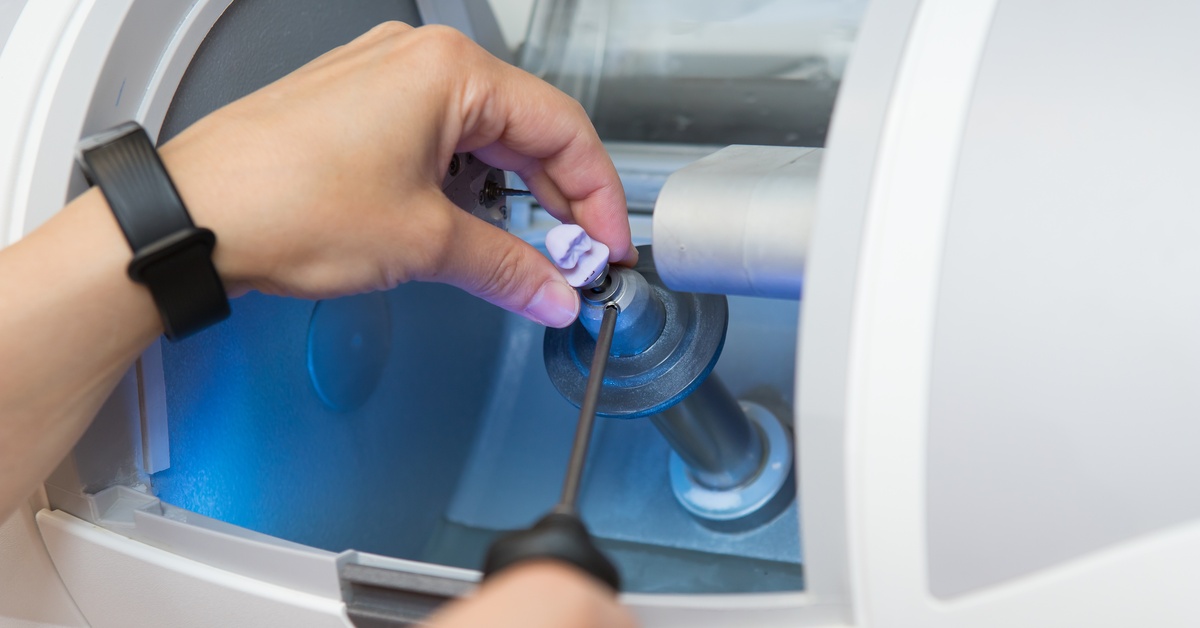
A healthy, confident smile is vital to a person’s overall well-being, affecting everything from self-esteem to daily functionality. However, many people experience oral issues that lead to them having to get a dental crown. This custom-made cap can restore the function, appearance, and structural integrity of a tooth. If you’d like to know more about how a dentist adds this reliable, effective solution, learn more in this comprehensive guide to the step-by-step process of getting a dental crown.
Your Dentist Examines and Diagnoses the Tooth
Getting a dental crown always starts with a thorough exam and diagnosis. Whether you’re experiencing pain, sensitivity, or difficulty biting and chewing, your dentist will investigate the root cause and closely examine the affected tooth using advanced imaging technology, such as X-rays, to detect underlying problems.
This phase is critical in determining whether a crown is the right solution for you. During the appointment, the dentist may also check the positioning of neighboring teeth and assess your bite to ensure that the final crown will fit securely and function correctly within your mouth. By the end of this step, your dentist will have a clear understanding of how to proceed.
The Dentist Prepares the Tooth
Once your dentist has confirmed that a crown is necessary, they may choose to proceed and add a chairside economical restoration of esthetic ceramic (CEREC) crown, which involves a same-day dental crown service. As the dentist prepares the tooth for treatment, they’ll reshape it by removing any damaged or decayed areas to create a stable foundation for the crown. This preparation ensures that the crown will fit snugly over the tooth, preventing further damage or discomfort.
This stage highlights the importance of precision and care, as preparation directly affects the crown’s stability and appearance.
The Dentist Performs a Digital Scan

After the preparation process, your dentist will use advanced digital scanning technology to capture precise 3D images of your tooth. Traditional dental practices relied on messy, uncomfortable molds for this step, but digital scanning has drastically improved accuracy and comfort. The resulting scan serves as a blueprint for your personalized crown.
During this process, your dentist will focus on capturing every contour, ridge, and detail of the tooth. These scans provide highly intricates view of your tooth, allowing them to create a crown that will fit naturally over the tooth.
Digital scanning’s efficiency saves valuable time while adding convenience for patients. It also minimizes human error, offering peace of mind regarding how the crown looks and functions.
A Milling Machine Constructs the Crown
After the dentist finishes designing your crown, they’ll transfer the digital files from the scan to a milling machine. Using materials such as ceramic, the machine sculpts the crown with exceptional attention to detail. Because your dentist has considered factors such as color, shape, and size, the machine should craft a crown that looks and feels natural. By avoiding traditional off-site production, dentists can quickly address dental issues without compromising longevity or precision.
Additionally, if the affected tooth is a front tooth, your dentist may choose to apply some customized colorization to the crown to match the adjacent teeth and give it a natural look.
The Dentist Attaches the Crown

When the crown is complete, your dentist will polish it and check how it interacts with opposing and adjacent teeth. Every detail counts, so the dentist will adjust the placement to achieve functionality and comfort.
After confirming that the crown fits optimally, the dentist will apply a permanent adhesive to securely bond it to the tooth. Once the bonding is complete, the crown restores the tooth’s strength and ensures that it aligns seamlessly with the rest of your smile. Patients often marvel at how natural their crowns look and feel—many cannot distinguish crowns from their original teeth.
Your dentist’s office will provide care instructions at the end of this appointment. Usually, dentists advise patients to maintain oral hygiene routines and schedule future check-ups so that the dentists can monitor overall dental health. With proper care, crowns can last for over a decade, making this step the culmination of a long-lasting, worthwhile process.
Common Symptoms of People Who Need Crowns
After learning the step-by-step process of getting a dental crown, you may still be wondering about the signs that you need a crown. Knowing these symptoms can help you maintain your dental health. Read about several of them below.
Broken or Cracked Teeth
When tooth breakage occurs beyond repair, crowns are excellent choices for restoring the tooth’s integrity. Patients with broken teeth often notice sharp pain when eating or jagged edges. The structural support of a crown prevents further damage while restoring a natural appearance.
Broken teeth may also require crowns to safeguard against infection. When cracks expose the inner layers of the tooth, bacteria can infiltrate and compromise the tooth and surrounding bone. A crown fully encapsulates the damaged tooth, providing comprehensive protection and allowing patients to regain functionality.
Large Cavities
Fillings alone often can’t mend cavities with extensive decay. Crowns can provide durable, long-term solutions for teeth compromised by deep or widespread cavities. By covering the tooth completely, crowns protect against further decay and eliminate discomfort caused by sensitivity or exposure.
Dentists frequently recommend crowns for teeth with cavities that affect their structural integrity. Beyond restoring their function, crowns also improve the aesthetics of teeth, giving patients confidence in their smiles once more.
Teeth With Irregular Shapes
Misshapen or irregularly sized teeth can sometimes interfere with functionality. Teeth can lose their symmetry, whether via genetic factors or grinding over prolonged periods. Crowns reshape these teeth, providing a smoother, more uniform appearance.
Misaligned or uneven teeth can also affect chewing and speaking. Crowns address these concerns by correcting irregularities and restoring balance. Dentists often recommend customized crowns for front teeth to enhance smile aesthetics while maintaining a natural appearance and proper bite alignment.
Stained Teeth
Stains that penetrate deep within a tooth often elude traditional whitening treatments. For patients with severe discoloration caused by medication, aging, or smoking, dental crowns provide practical alternatives. Crowns not only conceal imperfections but also enhance the brightness and consistency of teeth in ways that mimic natural enamel.
As we’ve seen, getting a dental crown involves several precise steps to ensure successful placement. With the help of advanced technology and a competent dentist, you can add this durable, functional, and aesthetically pleasing solution to your mouth.
Pinnacle Dental Associates can help you address your dental issues and restore your confidence and comfort with a CEREC crown. Contact us today to discuss how we can add these cutting-edge solutions to your mouth and enhance your oral well-being.
